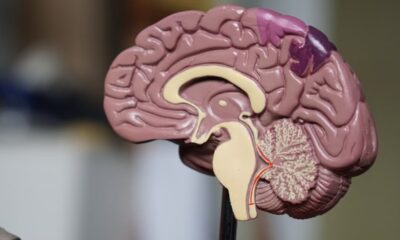Education
Pioneering Structural Engineer Erik Vanmarcke Passes at 83

Erik Vanmarcke, a prominent figure in structural safety and an influential scholar, passed away on July 7, 2023, at the age of 83. His groundbreaking work in civil and environmental engineering, particularly in understanding how natural forces such as earthquakes affect structures, has left an indelible mark on the field.
Born on August 6, 1941, in Menen, Belgium, Vanmarcke earned his bachelor’s degree from the University of Leuven and his master’s from the University of Delaware. He completed his Ph.D. in civil engineering at the Massachusetts Institute of Technology (MIT) in 1970 and was appointed as a faculty member shortly thereafter. He remained at MIT until 1985, when he transferred to Princeton University, where he continued his influential work until achieving emeritus status in 2013.
Vanmarcke’s contributions to structural reliability began with his publication of the seminal book, “Random Fields: Analysis and Synthesis,” in 1983. This work introduced the mathematical framework of random fields, allowing engineers to better analyze properties that fluctuate in space and time, such as water levels and pressure changes. His insights have profoundly shaped the fields of risk assessment and structural engineering.
Innovative Research and Global Influence
Throughout his career, Vanmarcke’s research spanned an impressive array of topics. According to Ning Lin, a professor of civil and environmental engineering at Princeton and one of Vanmarcke’s Ph.D. students, his work extended beyond seismic activity and soil properties to include applications in cosmology. Lin pointed out that Vanmarcke’s curiosity led him to explore energy density fluctuations from the early universe, culminating in his 1997 publication, “Quantum Origins of Cosmic Structure.”
His pioneering work on earthquake occurrence models significantly advanced the field of seismic hazard applications worldwide, noted Anne Kiremidjian, a former director of the John A. Blume Earthquake Engineering Center at Stanford. Kiremidjian emphasized that Vanmarcke’s models helped reshape understandings of earthquake risks along fault lines.
Colleagues remember Vanmarcke not only for his intellectual contributions but also for his mentorship. Lin described his ability to encourage graduate students and junior researchers through thoughtful questions, fostering their creativity and learning. Adam Hatzikyriakou, a vice president at SwissRe and a former Ph.D. student of Vanmarcke, shared how the professor remained engaged with students even after retirement, often attending seminars and offering insightful questions.
Vanmarcke’s expertise was sought globally. He conducted workshops in countries such as Turkey and the Soviet Union, collaborated with engineers in China, and organized educational summer schools for emerging researchers. His “global perspective and intellectual openness,” as described by Zhaohui (Ann) Chen, who worked with him as a visiting scholar, exemplified his commitment to fostering knowledge across borders.
A Lasting Legacy in Engineering
Vanmarcke’s academic legacy includes not only his pivotal research but also his role in shaping the next generation of engineers. He expanded the probability frameworks established by his mentor, C. Allin Cornell, applying them to a broader spectrum of materials and uncertainties inherent in engineering design. This advancement has earned Vanmarcke recognition as the “father of geotechnical reliability analysis,” according to Ross Corotis, an emeritus professor at the University of Colorado-Boulder.
His contributions to the field were recognized through multiple honors, including his election as a foreign member of the Royal Academies for Science and the Arts of Belgium and a distinguished membership in the American Society of Civil Engineers (ASCE). The ASCE awarded him its Alfred M. Freudenthal Medal and the Raymond C. Reese and Walter L. Huber Research Prizes for his groundbreaking work.
In addition to his technical achievements, Vanmarcke was an avid reader and linguist, fluent in five modern languages and well-versed in Latin and ancient Greek. His passion for literature was reflected in his interactions with students, as Lin recalled him sharing a “wall of books” that continues to inspire her.
Vanmarcke is survived by his wife, Lynne Durkee; three children and their spouses; eight grandchildren; three step-daughters; and five sisters. His contributions to engineering and mentorship will resonate for years to come, and those wishing to honor his memory can contribute to the Institute for Advanced Study.
-

 Technology4 months ago
Technology4 months agoDiscover the Top 10 Calorie Counting Apps of 2025
-

 Health2 months ago
Health2 months agoBella Hadid Shares Health Update After Treatment for Lyme Disease
-

 Health3 months ago
Health3 months agoErin Bates Shares Recovery Update Following Sepsis Complications
-

 Technology3 weeks ago
Technology3 weeks agoDiscover 2025’s Top GPUs for Exceptional 4K Gaming Performance
-

 Technology2 months ago
Technology2 months agoElectric Moto Influencer Surronster Arrested in Tijuana
-

 Technology4 months ago
Technology4 months agoDiscover How to Reverse Image Search Using ChatGPT Effortlessly
-

 Technology4 months ago
Technology4 months agoMeta Initiates $60B AI Data Center Expansion, Starting in Ohio
-

 Technology4 months ago
Technology4 months agoRecovering a Suspended TikTok Account: A Step-by-Step Guide
-

 Health4 months ago
Health4 months agoTested: Rab Firewall Mountain Jacket Survives Harsh Conditions
-

 Lifestyle4 months ago
Lifestyle4 months agoBelton Family Reunites After Daughter Survives Hill Country Floods
-

 Technology3 months ago
Technology3 months agoUncovering the Top Five Most Challenging Motorcycles to Ride
-

 Technology4 weeks ago
Technology4 weeks agoDiscover the Best Wireless Earbuds for Every Lifestyle





















